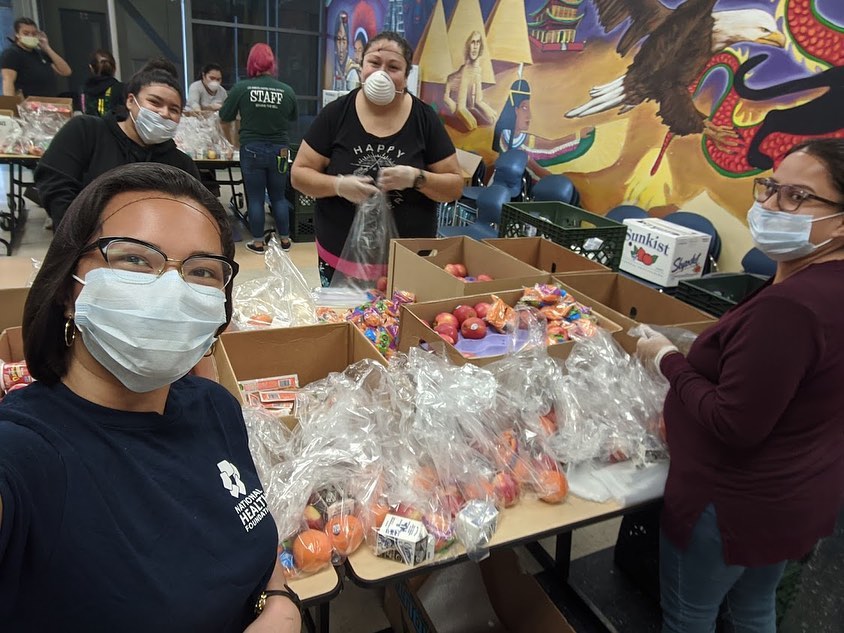When you think of someone experiencing food insecurity, who first comes to mind? Is it an undocumented single mother who often skips meals to provide food for her four U.S. born children? Or perhaps a senior cancer survivor with no family to lean on, facing trouble with technology and feeling shut out of the world?
Food insecurity is defined as having limited, uncertain, or inconsistent access to the quality and quantity of food that is necessary to live a healthy life. Having sustained access to food is tied to positive social, physical, and mental health outcomes. In Los Angeles County, food insecurity is a significant public health problem particularly among low-income households. According to a 2019 report by California Food Policy Advocates, nearly 2 million low-income adults and children face food insecurity in the county. This means that one in five individuals across the county faces food insecurity on a daily basis.
Food Insecurity Disproportionately Affects Low-Income Communities
Nationally, 21.2% of African American households and 16.2% of Hispanic households are food insecure, both of which are higher than the national average of 11.1% according to the USDA. This is in stark contrast to white households of which under 10% are food insecure. This data clearly illustrates how communities of color are more likely to experience food insecurity over their white counterparts.
To better understand the roots of food insecurity among communities of color, we must unveil the structural racism inherent in our public institutions and systems. When it comes to employment opportunities, people of color are more likely to work in low-wage roles with fewer benefits, pushing families and individuals to make difficult choices on where to allocate funds. Low-income neighborhoods are also more likely than affluent, white neighborhoods to be surrounded by food deserts, lacking access to affordable, nutritious food. With a lack of nutritious options, it is not a coincidence that black, indigenous and communities of color face higher rates of obesity and diabetes, conditions exacerbated by poor nutrition that become costly and fatal down the road.
As minority and marginalized communities were already struggling with food insecurity, the COVID-19 pandemic has only intensified this issue. Unemployment is soaring in Los Angeles, adding the stress of where their next paycheck will come from. Those funds are critical to feed their families, afford medications, and pay their rent and other bills. Schools have closed until the next school year, while low-income children depend on 2 out of 3 meals for their daily nutrition from the National School Lunch Program. Congregate meal sites for seniors, who have the lowest income and are most vulnerable to COVID-19 have shut down, causing a greater risk of isolation and food insecurity. Programs like CalFresh, WIC, food banks and food pantries have been at the forefront of combating food insecurity issues. But now with COVID-19, CalFresh applications have spiked, doubling the number of applications of 40,000 in March 2019 statewide, to over 89,000 in March 2020, overwhelming the system and causing delays in benefits. Food bank lines have doubled causing long waits for food. Panic buying at grocery stores have left WIC participants with limited food options when their selection was already limited before.
Addressing COVID-19 and Food Insecurity
Though the food insecurity issue has worsened with the virus, Los Angeles and the state of California were quick to find solutions to feed their most vulnerable communities. California passed the Families First Care Act, increasing monetary benefits for CalFresh and WIC participants. WIC food packages have also expanded, adding more food variety. CalFresh applications have increased in flexibility by waiving the interview process and allowing EBT funds to be used online to buy groceries through Wal-Mart or Amazon. Schools are distributing thousands of Grab-and-Go meals throughout the week, providing breakfast and lunch for their students. Additionally, Governor Newsom recently announced that the state will distribute $500 to undocumented immigrants who are not eligible for aid from the federal government.
In Los Angeles, Mayor Eric Garcetti has implemented the Angeleno card, distributing emergency financial assistance. New partnerships are being formed to deliver meals to the most vulnerable senior citizens with EveryTable and Access Services, where the Department of Aging and the Mayor’s Office will provide 10 meals a week to 7,280 new seniors. The City will also double the number of meals received by 5,000 seniors already enrolled in the Department of Aging’s meal delivery program.

Sustaining Efforts Post-Pandemic
While the state and county efforts to combat food insecurity is impressive, the difficult question remains: what will happen after COVID-19? Solutions for reducing food insecurity need to come from a policy level and temporary polices are demonstrating success. There should continue to be flexibility with CalFresh applications so that these benefits are easier for the general public to access. There should be a continuance of delivery services for our most vulnerable seniors. There should be an expansion of WIC food packages that includes more options for nutritious foods. Immediate action should be taken to address the threat of Public Charge on immigrant communities.
The team at National Health Foundation knows firsthand what impact these programs have in local communities. A CalFresh Connection participant recently shared “I am really happy with the support that NHF has provided me because I was able receive my CalFresh benefits quickly. My CalFresh application was approved within a week [and] I am now relieved that I will be able to put food on my table. I never thought that I would receive this much support and I am so grateful for NHF.” To ensure vulnerable individuals and families receive the support they need, this will take a concerted effort on behalf of local, state and federal entities to push for inclusive policies and funding directed at under-resourced communities.
